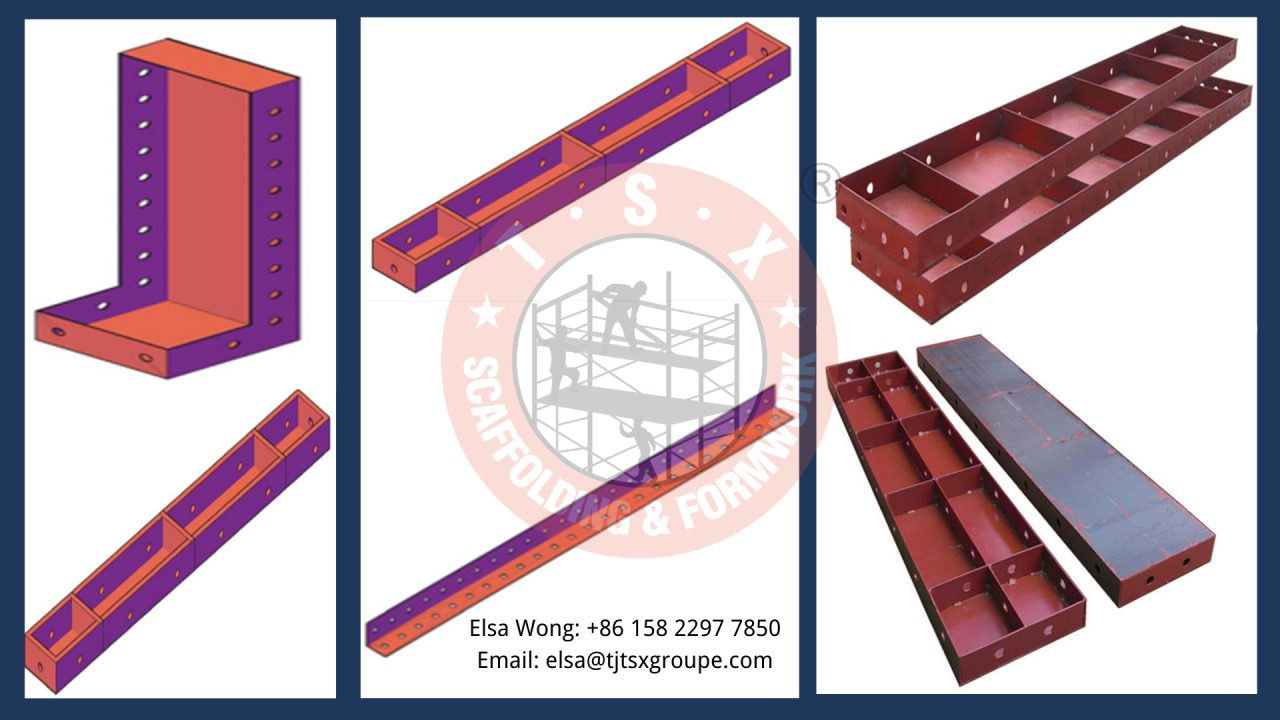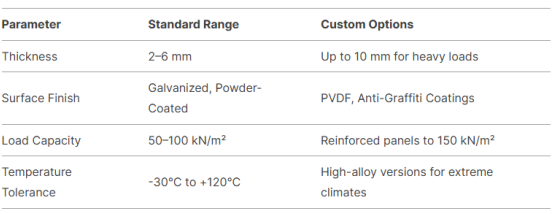In an era where construction speed and precision are non-negotiable, Flat Metal Panels have emerged as a cornerstone technology for concrete forming, cladding, and structural applications.
As a vertically integrated manufacturer with ISO/SGS certifications and a proven track record in 100+ countries—from Australia’s high-rises to Uganda’s infrastructure projects—we dissect the engineering excellence behind Flat Metal Panels. Discover how these unassuming yet critical components can elevate your project’s quality, safety, and profitability.
1. What Are Flat Metal Panels? Core Characteristics

Definition: Prefabricated steel or ironsteel sheets with uniform thickness (2–6 mm), engineered for seamless concrete forming or architectural finishes.
Key Attributes:
Ultra-Flat Surface: Tolerance ≤1 mm/m², ensuring smooth concrete finishes without honeycombing.
Modular Design: Standard sizes (e.g., 1.2m×2.5m) with customizable perforations or embossing.
Multi-Role Utility: Used in walls, columns, slabs, and even as permanent architectural cladding.
2. Technical Advantages Over Traditional Solutions
2.1 Precision & Efficiency
Zero Warping: Steel core resists humidity-induced deformation, critical for tropical markets (e.g., Congo, Singapore).
Rapid Assembly: Interlocking edges and pre-drilled holes cut installation time by 40% compared to plywood.
2.2 Cost-Effective Longevity
200+ Reuse Cycles: Outlasts timber by 10x, reducing material costs by 35% over 5 years.
Low Maintenance: Painted coating (80–120 μm) eliminates rust repair in coastal zones (e.g., Queensland, Chile).
2.3 Sustainability Edge
100% Recyclable: Aligns with green building certifications (LEED, BREEAM) demanded in North America and Europe.
Waste Reduction: Precision cutting minimizes concrete spillage and rework.
3. Critical Specifications for Project Success

4. How to Select the Right Flat Metal Panels
Step 1: Match Material to Application
Heavy Civil Engineering (Bridges, Dams):
Choose 6–8 mm thickness with ribbed backing for 120+ kN/m² loads.
Architectural Cladding:
Opt for 3–4 mm powder-coated panels with embossed textures.
Step 2: Optimize for Environmental Challenges
Coastal/High-Salinity Areas:
Painted + epoxy sealing (e.g., UAE, Australia).
Freeze-Thaw Cycles:
Thermal-shock-resistant steel grades (e.g., Canada, Scandinavia).
Step 3: Maximize ROI Through Smart Design
Reusable Tie Holes: Pre-drilled holes compatible with standard snap ties.
Panel-Linking Kits: Invest in universal connectors to mix old/new panels seamlessly.
5. Installation & Maintenance Best Practices
(Insert image: Technician using laser level to align flat panels)
Pre-Installation Checks:
Verify panel flatness with a 2m straightedge (gap ≤1.5 mm).
Apply non-stick release agent to prevent concrete adhesion.
Post-Pour Care:
Demould within 18–24 hours using nylon pry bars to avoid edge damage.
Clean with pH-neutral detergent; store vertically under cover.
6. Global Case Study: Flat Metal Panels Redefining Speed
Project: 40-Stage Commercial Tower in Melbourne
Challenge: Meet 3-day floor cycle with millimeter-level finish accuracy.
Solution: 4mm flat panels + automated alignment system.
Results:
25% faster vs. traditional systems.
Zero surface rectification costs.
Why Our Flat Metal Panels Lead the Market
Vertical Integration: Control quality from raw steel to final coating.
Globally Certified: Compliant with AS/NZS 1365, ASTM A653, and EN 10346.
Agile Customization: Modify thickness, coatings, or hole patterns in 7 days.
Conclusion
Flat Metal Panels are not just a component—they are a strategic asset for contractors prioritizing precision, speed, and lifecycle value. By leveraging engineered specifications and global best practices, your projects can achieve unprecedented efficiency. Partner with a certified supplier to transform your next build.


